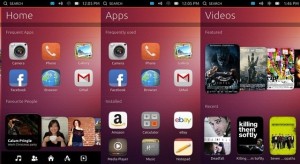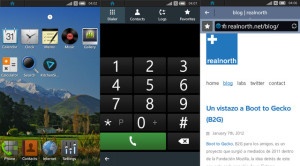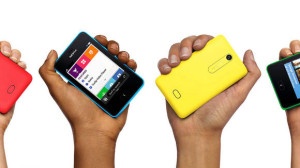The Mobile Operating System landscape is currently dominated by Apple’s iOS and Google’s Android OS. Several others, including Blackberry’s BB10 and Microsoft’s Windows Phone OS, have tried to break this duopoly but haven’t made a lot of head way. Newer players in this field are now focusing on the developing world as the area where there is the most room for growth. The reason for this isn’t very far fetched. Africa accounts for just 2% of the World wide smart phone user base. This creates an enormous opportunity for any OS maker who can strike the right balance between features and pricing of their platform for the African market.
In this field, as in most other Software related fields, Open Source makes a good showing, and although the jury is still out on who will succeed, smart money is on Open Source Mobile OS.
Here are the Open Source Mobile OS currently in varying levels of development, that have the ability to conquer this uncharted territory
Firefox OS

Firefox OS is a new mobile operating system developed by Mozilla. It uses a Linux kernel and boots into a Gecko-based runtime engine, which lets users run applications developed entirely using HTML, JavaScript, and other open web application APIs.
The unique thing about Firefox OS is the fact that everything is built using HTML5. From the OS itself to the applications which developers would build to run on it. This means that the barrier of entry for developing applications has been reduced drastically. Mozilla has also developed means for HTML applications to hook into core functionality of the phone such as making phone calls, interfacing with the camera, etc.
Current Status
Several companies such as Telefonica have signed on to support Firefox OS and recently, a developer phone called was released by Geeksphone. However, there is no clear date for a wider scale release. Mozilla has confirmed though, that they will be focusing Firefox OS on developing markets.
Ubuntu Touch

Ubuntu is a Linux based Operating system developed by Canonical Ltd. It has been available for Desktops, Servers and Cloud for several years.
Ubuntu Touch is a mobile interface for Ubuntu. The interface designed primarily for touchscreen mobile devices such as smart phones and tablet computers. Ubuntu Touch aims to provide a same user experience as the Unity desktop.
Ubuntu Touch intends to play in both the high end market, competing with the likes of iOS and Android, and the lower end market, which we are most interested in.
The Unity UI is one of the most compelling features of Ubuntu Touch as it is quite sleek and unique. Ubuntu Touch features an entirely gesture based UI and the OS does not require a device to have any front facing buttons. It uses QML as its default development platform but it also supports HTML5 much in the same way Firefox does.
Current Status
The first stable version of Ubuntu Touch is expected to be released in October. It can be currently installed on a bunch of Android devices available today. No hardware partners have been announced to date, and although Canonical claims that phones would be on sale Q1 of 2014, there are no tentative details on how this would be achieved.
Sailfish OS

Sailfish OS is a mobile-optimized operating system that has the flexibility, ubiquity and stability of the Linux core with a cutting edge user experience built with the renowned Qt™ platform.
This is another Open Source Mobile OS that is playing in the high end, as well as the low end market. It is developed by Jolla, a company made up of former Nokia employees that worked on their now defunct Meamo and Meego OSes.
Sailfish OS also uses QML as its default development environment. They also have support for running Android applications, although the specifics of how this works hasn’t been properly outlined.
Much like Ubuntu Touch, Sailfish OS is also very gesture centric. The UI has a nice chameleonic effect brought upon by the wallpaper in use. This gives it a unique and different look for different users.
Current Status
Jolla’s first smart phone (also called Jolla) running Sailfish OS was just recently announced. It is expected to have a Christmas launch in select European countries and China. It is presently unclear how Jolla plans to penetrate the African market, or if they plan to do so at all.
Tizen OS

Tizen is an operating system for devices including smart phones, tablets, in-vehicle infotainment (IVI) devices, and smart TVs. It is an open source system that aims to offer a consistent user experience across devices.
This project is run by the Linux Foundation, with principal contributions from Samsung and Intel. Much like Firefox OS, Tizen also uses HTML5 as its core developer platform.
Current Status
There isn’t a lot of information on the low end aspirations of Tizen OS. However, it has the ability to scale down, as a result of its Linux kernel base. Samsung is rumoured to be very interested in bringing Tizen to market, and If they treat it like they do their Android Galaxy Smartphone range, we can expect to see everything from Galaxy S4-esque super high-end phones to the Galaxy pocket like low-end devices.
Nokia Asha Platform

While this is not an Open Source Mobile OS, it is playing in the same field as all the OSes detailed above, and at the moment, is the closest to being rolled out to end users.
Nokia Asha Platform is a new OS from Nokia built to power its incredibly popular Asha range of Smart phones. Currently, Asha phones run on the aging S40 operating system. This new operating system is sleek looking and features most of the common features found in Smart phone OS. The Asha Platform supports Java applications, and according to Nokia, it would be very easy for developers to port existing S40 apps over to the Asha platform. Asha Platform also has its own SDK known as the “Asha SDK” which is also based on Java, for developing applications specifically to run on the new OS for Asha phones.
Current Status
Nokia recently announced the Nokia Asha 501, which is the first phone to feature the Asha Platform. It is reported to have up to 48days of standby time. The Asha 501 has some drawbacks though, most notably the lack of a 3G radio. It is expected to ship next month at a cost of $99 (~₦16,000).
These are the most exciting and developmentally viable Open Source Mobile OS projects targeting the developing market, either in part or entirely. The question of who will succeed in wooing the African smart phone buyer is still an unanswered one, but in this, like in most other things, being first to market helps a lot. In that, Nokia has the clear lead. The fact that their platform isn’t the most exciting though, might allow another player to steal the lead once they are ready to launch.
This article was originally published on my blog, FOSSWatchNg.
